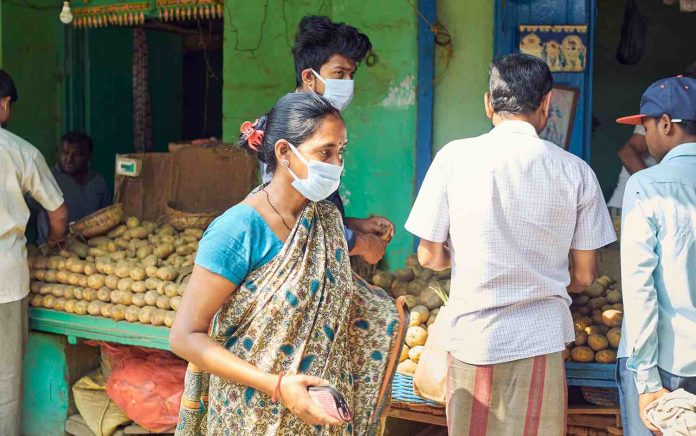This article is written by Shobhana Aggrawal. The article tries to outline the impact of COVID-19 on food security.
‘Food is national security. Food is a craft. Food is everything when you think about it’ – Jose Andres Puerta.
Introduction
The COVID- 19 outbreak has shown his tread. Many countries reported a huge number of cases. Korea, Japan, Italy, America. India etc. in fact the number of infected in some countries is greater than China. It was time to think now about serious implications in future. One of the serious issues globally is ‘food security’. The corona pandemic is highly threading food security and safety of a large number of people throughout the world. Millions of human beings suffered from malnutrition before the pandemic and now the situation arises like COVID-19 it hit many countries. If the immediate steps are not taken then so many countries would face food emergencies. Why the situation is emerging is because due to the stoppage of everything, countries don’t have stable revenues in their hands. So the economic burden on the poor and middle-class people. Rising prices of production travelling impact on rising food prices and it trigger unrest and protest. The assumption is there that at the end of 2020, more than 200 millions of people will go to face food insecurity. To stop this we can’t say the situation is in our hands but we can control this proper delegation of power and implement good regulations.
What is COVID-19 & food security
The novel coronavirus disease (COVID-19) spread all over the world, almost 190 countries. This is a highly transmitted viral infection which emerged in Wuhan, China and now it is a question of challenge before all over the world how to control this. On March 12, 2020 WHO declared that Covid19 was a global outbreak of diseases. And now it’s a serious concern of every state to stop the large number of infected groups. Food security as defined by the World Food Summits(WFS) & the food & agricultural organization, “When people at all times have physical and economical access to sufficient, safe and nutritious food that meets their dietary and food preferences for an active life.” There are four main pillars of food security availability, access stability and utilization. It means that the actual availability of food, monetary/ economic access of food, and there must be stability in both availability and access, and then an absorptive health status. Among this chain as per UN FAQ availability and access are most important.
How pandemic hits food security globally and its impact on FSN
In developing countries, a serious concern regarding food security emerged in the past few years. Many committees in the world so many experts issue serious discussions regarding how COVID 19 impacts FSN. They aim to understand how a pandemic situation affects the food safety chain. As per World Health Organization prescribes some majors which have to be taken when situations like pandemic closure, lockdown etc. such majors affect the earning capacity of working-class people and so as to decrease the demand power and the capacity to purchase and distribute the food. All classes of people have a differential impact the more suffering in this situation is poor and vulnerable. In this regard, the United Nations has expressed serious concern for the poor facing malnourishment and starvation. Economic growth no longer guarantees the end of hunger, even during pandemic situations developed countries have safety nets to help the vulnerable groups. They also point out that India has massive economic growth in recent years, still facing problems of food security and children malnourishment. As per the United Nation Food & Agricultural Organization, more than 820 millions of people across the globe are already suffering malnutrition due to hunger.
Somewhat 180 millions of children in the globe died because of lack of proper nutrition. For e.g. in East Africa, people are facing a “triple menace” of mutually exacerbating disasters, as ongoing heavy rain hampers attempts to deal with swarms of locusts in the midst of COVID-19 outbreak. Meanwhile, the worst locusts crisis in decades threatens crops heading into the harvest period. More than 820 millions of people were already classified as food insecure. The situation in Pakistan, the analysis showed that more than 50% of the population in Pakistan suffers from food insecurity. And this condition is going to worsen in the situation of monsoon and bad weather conditions. In 2020 only a lot of refugees will come to Afghanistan from Iraq and a number of millions of people are already suffering from food insecurity and that is the reason why they are being replaced from one country to another.
Factors that cause food insecurity- food security can be caused by a number of factors. There are some factors responsible for the demand side as well as some factors that are responsible for the supply side. There are other factors too, now when we are going to see about the situation like Covid-19 is major factors are combination and insecurity, health shocks, weather extremes, economic insecurity, weather extremes, pests, displacement. Food insecurity can be caused by any one of these factors or a combination of a number of factors like economic shocks and displacement. That includes extremes-natural clematis, floods, tsunamis. Insecurity/conflicts include- internal disturbance, crises, not stable government, constitutional machinery fails and resulted in the people becoming refugees. Economic shocks include-defalcation, depreciation, reducing the power of purchase but raising the food price. Health shocks include- such pandemic, disease which is incurable, poor quality of health facility, polluted air, and water.
Scenario in India
India has witnessed many large outbreaks of emerging & re-emerging infectious diseases in the recent past. So far as developing countries like India are concerned the situation is not so bad. Today the country produces 104 million tons of rice and 93 millions tons of wheat annually, which is more than sufficient to meet the requirement of the widespread Public Distribution System (PDS). The major challenge to India food security can enumerate from the demand side on the supply side is quite satisfactory. As per IMF projection, India’s GDP is projected to grow at 1.9% which has been since been downgraded to 0.2-0.5 % by several rating agencies. 
What possible solutions?
Act from now to prevent health crises from turning into food crises. Still, there is no possible vaccine on COVID 19. And we can’t say when it will end. So I need to ensure the urgent need for food security. There is no hard and fast solution to ensure food security and prevent food emergencies. But we can take some preventive steps like there is a need to closely monitor food prose and markets. Transparent information will strengthen government management over the market. The government must put a major to prevent people from panicking. And experts need to make some rational decisions. Again it is needed to ensure national agricultural and food supply chains function casually. For e.g. china has put one of the good examples of how to ensure food security by opening as a “green channel” for fresh products and banned unauthorized roadblocks.
Call for innovative to keep sales growing- some companies come forward to play a logistic role during these food crises. The demand for online home delivery increases during this lockdown. Some companies come with app features for delivery purposes. Social safety nets are needed to protect those who are providing this service. Investing in the health and neutrinos of the groups could lower the mortality rate of diseases. Furthermore, investigations need to build an even more resilient food system. Some call for innovation must take place not only domestic level but also for an international level because the infection can cross the border easily. So much precaution must take place during the COVID 19.
Awareness of not to panic and keep global trade open- it is important to run a smooth flow in the international market. And make the use of global trade. WTO must take steps to ensure all that COVID 19 or any other such a pandemic is not an excuse to issue and must issue trade protectionist policies. Some recommendation of prior actions-
- Need to preserve food, livelihood for vulnerable groups.
- The government needs to declare food production, marketing, and distribution of essential services everywhere to ensure the continuous functioning food system during the critical situation also.
- Use of an updated monitoring food security system to understand who is most at risk.
- Promote financial inclusion in rural areas.
- Strengthen the social protection system for nutrition.
- Invest more in a sustainable future.
Conclusion
“COVID- 19 is a health crisis, but it could also lead to food security crises if proper measures are not taken”. The pandemic now hits every country at the same time and is an immense global challenge. So now it’s time to tackle not only health crises but also food crises. As many international studies suggest that if proper steps are not taken there will be a food emergency. So the problem not only arises from COVID 19 but from before only some country facing problems of starvation. Malnutrition addresses all these problems and requires us to work together across the globe and reshape our food cycle. Also, need to settle where the risk is more acute. Social protection is the heart of food security. For this concern, we can not avoid the worst impact which definitely emerges in future but we can better balance with our economy- class of peoples- vulnerable groups- and healthy, neutrinos diet. And thus best health prospects- for all.
References
- In the Chinese version of this report, COVID-19 is referred to throughout as novel coronavirus pneumonia or NCP, the term by which COVID-19 is most widely known in the People’s Republic of China.
- Edward clay, Overseas Development Institute, London, UK, paper presented at the FAQ expert Consultation on Trade & Food security: Conceptualizing the linkages, Rome, (July 11-12,2020,10.15am),http://WWW.fao.org/docrep/005/y4671e/y4671e06.htm#fn21
- Subodh Ghildiyal, ‘Vouchers for the poor? UN in talks with Government on Zero Hunger Goal,’ Times of India, New Delhi, July 18, 2014.
- http://media.ifrc.org/ifrc/press-release/east-africa-red-cross-raises-alarm-triple-menace-floods-covid-19-locusts/ ( June 14,2020 , 11 am)
- http://www.fao.org/ag/locustsa/en/info/info/index.html accessed at 24 june.2020 (June 15,2020,12pm)
- State of food insecurity in the world, 2019.
- http://datalab.review.fao.org/dailyprices.html ( June 25, 2020, 1 pm)
- Dikid T, Jain SK, Sharma A, Kumar A, Narin JP. Emerging and re-emerging infection in India: an overview. Indian J Med Res.2013;138(1):19-31.
- “Annual report of the department of Agricultural Cooperation and farmers’ Welfare, 2016-17, based upon the 4th advance estimates for the year”, at http://agricoop.nic.in/sites/default/files/annual-rpt-201617-E.pdf 10.9
- Ensuring food safety during the pandemic, by ET Contributors ( June 25,2020,1pm)
LawSikho has created a telegram group for exchanging legal knowledge, referrals and various opportunities. You can click on this link and join:
 Serato DJ Crack 2025Serato DJ PRO Crack
Serato DJ Crack 2025Serato DJ PRO Crack










 Allow notifications
Allow notifications



